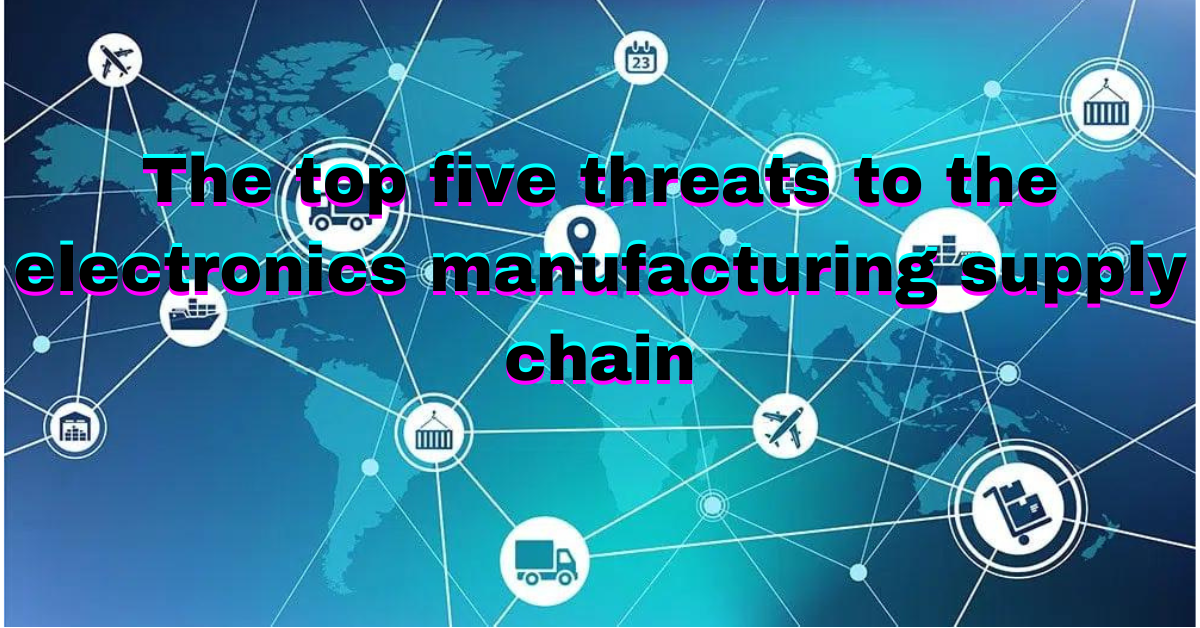
The top five threats to the electronics manufacturing supply chain
Avoiding interruption in the electronics manufacturing supply chain is a continual endeavor that can be difficult – whether it’s reducing the effects of natural disasters, forecasting price swings, controlling the implications of geopolitical instability, or avoiding cyber assaults.
In this blog post, we look at five main challenges to the stability of the electronics manufacturing supply chain, as well as initiatives original equipment manufacturers (OEMs) and their outsourcing partners may take to minimize the impact of these risks.
- Natural Disasters
Natural disasters can have a severe impact on the supply chain, whether through delivery delays or pauses, closed ports, transportation disruptions, or irregularity in supply and demand.
For example, Hurricane Florence has been dubbed the most expensive storm to ever hit the United States, causing significant damage to warehouses, interruption to road and rail connections, and an economic effect of more than £135 billion.
The exact impact of natural disasters is difficult to forecast, but there are certain critical steps that OEMs can take to improve readiness and avoid lengthy disruption if the worst does occur. The first step is to create a strategy and recovery process that includes clear rules and instructions for everyone involved. Also maintaining regular contact with external electronic suppliers is also critical, as is ensuring that they have solid procedures in place to analyze risk, avert potential difficulties, and minimize the effects of unforeseen events.

- Price Volatility
Market volatility, combined with fluctuations in raw material prices, can have a significant impact on the cost of specific components within the supply chain.
Learning about industry trends can be quite valuable and being in constant touch with your electronic manufacturer can help in reducing supply chain risk. Detailed study and analysis may also be quite useful in forecasting price variations, whether it’s getting orders in early to prevent the impact of price increases, or slightly lowering inventory levels until the raw material price drops.
- Ignoring Technology Trends
Maintaining an agile and transparent electronics manufacturing supply chain has never been more vital as manufacturing processes get leaner and customer demands become more demanding. Manufacturers who wish to protect their supply chains, preserve the efficiency of their manufacturing processes, and ensure on-time delivery must be open to the benefits of emerging digital technology.
Using Big Data’s real-time analytics capability, for example, can allow businesses to filter and organize massive amounts of data to support their supply chain plans. Also using intelligent software solutions can play a critical role in assisting businesses in effectively planning for and forecasting future demand.

- Changing Government Regulations
For the supply chain to be stable, it is necessary to continuously be informed of new laws and changes to existing ones.
- Cyber Theft
The electronics manufacturing sector is becoming increasingly concerned about the risk of cyberattacks. Cybercrime was recognized as one of the top three events that had an impact on global supply chains. Companies need to protect their intellectual property assets more than ever as the volume of data moving through the supply chain increases. Fortunately, there are some significant changes that can be implemented from the ground up, starting with educating staff members within organizations about the dangers of security threats like computer theft, and password breaches.

Conclusion
As networks become smarter and more complex, the possibility of supply chain disruption is an ever-present issue, whether it occurs on a small or large scale, or is caused by internal or external forces. The ability of manufacturers to plan ahead, forecast “what ifs,” and react quickly to changing conditions will be critical in ensuring productivity, reliability, and on-time delivery. We understand that electronic sourcing components can be complex also the supply chain is a continual endeavor that can be difficult but Escronics can assist you in locating high-quality products and help you with the forecasting as well.











